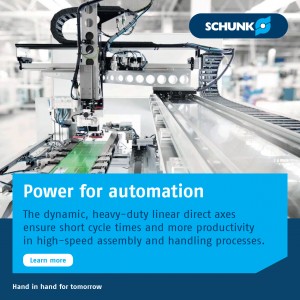Source : Mouser Electronics
To address climate change and sustainability, over 90 countries[1] are actively developing net zero CO2 emission policies. In short, net zero is achieved when human-based CO2 emissions are reduced and offset through other activities.
A fundamental factor in reaching net zero is the reduction of CO2 emissions across all industries. However, according to the International Energy Agency (IEA), the building sector is not on track to meet global 2050 net zero CO2 emission goals. Specifically, 2030 goals target 35 percent less energy consumption per square meter compared to 2021.[2] As buildings account for 30 percent of global energy consumption today, there is concern that emission goals will not be met unless the industry takes specific action to digitize systems and implement automation. Further complicating the challenge is that to implement effective automation, more real-time data capture is needed at a level that exceeds the current throughput capacity and responsiveness of legacy RS-485-based infrastructure. In addition, connecting devices and building systems to the network exposes them to cyberattacks, requiring advanced security beyond the current capabilities of these legacy networks.
This post explores how single pair Ethernet can help the building industry meet net zero goals while supporting AI-based automation in a secure and cost-effective manner. Single pair Ethernet enables long-reach connectivity to the edge for both greenfield and retrofit installations, making it a critical tool for seamless data transfer between IT and OT domains.
Energy Savings Through Digitalization
The IEA 2050 Net Zero plan[3] requires an approximately 15 percent reduction in emissions by 2030 by reducing demand through techniques like behavioral changes and digitalization. While teaching people how to conserve energyn can be effective, IEA case studies[4] point to automation rather than behavior change as having the most potential for energy reduction.
Increasing digitalization of commercial buildings will enable operators to not only measure operational improvements but also provide the foundation for operational automation. Converging operations of disparate HVAC, lighting, fire, and access control systems requires access to the right data and controls. These allow AI and machine learning (ML) optimization to determine the ideal use of light, heating, or cooling based on people’s current and planned activity. They also allow control of airflow to help ensure proper indoor air quality while balancing energy consumption.
However, it is hard to converge data from multiple systems with separate vendors maintaining separate databases, leading to data siloes. According to the IEA group working on data sharing guidelines[5] for buildings and HVAC systems, the challenge then is to bring diverse data sources together in a single pane of glass, so that trends can be compared and analytics applied, to yield new insights, as shown in Figure 1.

Figure 1: Converging systems allow data visualization through a single pane of glass, which enables energy savings when used alongside automation and AI/ML (Source: Analog Devices)
Modernizing the Communications Infrastructure
Key to merging the many different data sources within a building is the measurement and connectivity infrastructure being used. Traditionally, sensors and controls in commercial buildings have been connected through wired serial communication links using RS-485 transceivers and protocols like BACnet™, Modbus, and LonWorks.[6]
RS-485, however, is a legacy interface that is limited in both throughput and security. For example, the maximum baud rate for BACnet MS/TP, a common building automation protocol, running on an RS-485 physical layer is 115.2kbps.[7] In addition, legacy communication protocols like BACnet and Modbus were designed for closed networks and lacked built-in encryption and authentication capabilities. This creates a large cybersecurity threat as these devices are connected to the internet through gateways to IT infrastructure.
Single pair Ethernet, specifically 10BASE-T1L, is an exciting new communication protocol ratified in November 2019, IEEE 802.3cg, which is now being deployed in buildings.[8] Wired serial link cable used for RS-485 runs can be reused with 10BASE-T1L Ethernet data running over it. Thus, existing infrastructure can be adapted to single pair Ethernet.
Improved Communications
Heating and cooling systems have multiple components that need to exchange information to achieve the temperature set point, including thermostats, controllers, air handling units, and variable air volume units. Speeding up the frequency of communication from common serial baud rates of 9.6kbps to 115.2kbps to an Ethernet bandwidth of 10Mbps means the data throughput of the system has increased substantially. There are several important benefits that come with such high-speed IP-based communications, such as advanced analytics, energy savings, elimination of data siloes, and real-time responsiveness.
Secure Communication
Single pair Ethernet, 10BASE-T1L, is an important technology that brings IP connectivity to the edge, improving security, reusing wiring, converging IT and OT networks, and even delivering power. With significantly higher throughput, elimination of gateways, and advanced security, single pair Ethernet will help the building industry achieve the IEA Net Zero 2050 goal of reducing emissions by 15 percent by 2030.
Analog Devices has a team focused on the sustainable buildings market and is a leader in technologies enabling digital transformation such as single pair Ethernet (10BASE-T1L), security and intelligent IOs, as well as isolation and wired RS-485 transceivers for legacy systems. Analog Devices has several released single pair Ethernet products enabling point-to-point (ADIN1100, ADIN1110) as well as line-and-ring network topologies (ADIN2111). For single pair power over Ethernet, please see the LTC4296-1 on the power sourcing side and LTC9111 on the device side.
Author
Meghan Kaiserman is the strategic marketing director for sustainable buildings at Analog Devices and is focused on digitalization technologies including intelligent IO, single pair Ethernet, and security. Meghan has over 18 years of service at Analog Devices and previously held roles in applications and systems engineering. She has developed products for the industrial market ranging from precision analog to energy measurement and Industrial Ethernet. Meghan received a B.S.E.E. from the Cooper Union for the Advancement of Science and Art in New York City.
This blog is adapted from original content first published by Analog Devices, Inc. and edited and posted here with permission.
To learn more, visit www.mouser.com










